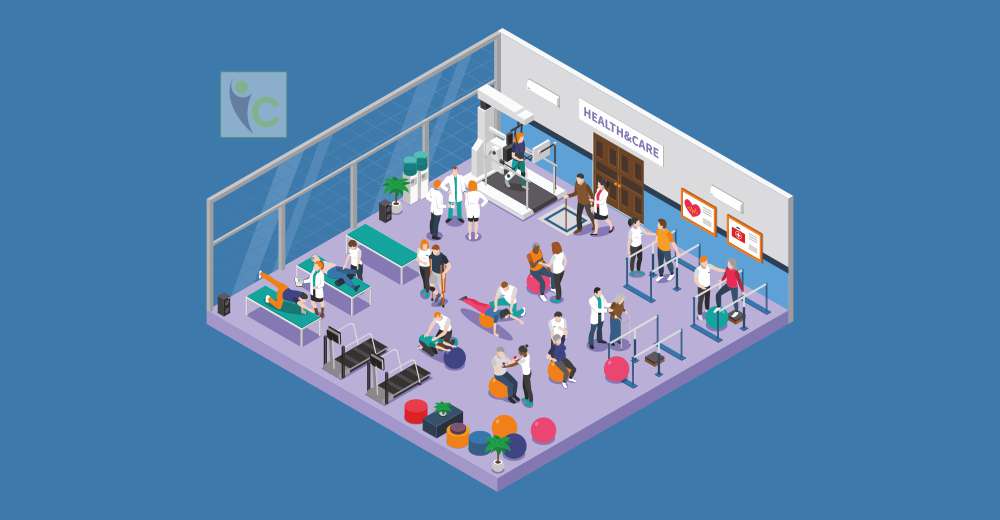While Speech-language pathology can be understood by the name itself (relation with speech and language), it is the fields of occupational therapy and physical therapy, which are often misunderstood. Even though both include important hands-on recoveries to help patients perform their daily tasks as effectively as possible, each field takes a different approach to help individuals get back to their usual way of life.
All these recovery practices come under Rehabilitation and the term refers to examination, therapies, and procedures that help patients to recover their functions. The rehabilitation therapy team consists of physical, occupational, and speech-language pathology specialists, all of whom work together to deliver treatment for people whose lives have been affected by the disease, trauma, or impairments. As a team, practitioners help to address impairments in clients’ ability to move, speak, eat walk, dress, and other engagement in their normal daily lives.
Basic Difference
Simply put, the main difference between occupational therapy and physical therapy is that occupational therapy focuses on enhancing the capacity of the patient to perform day-to-day tasks and physical therapy focuses on improving the ability of the client to move the human body. The third one, speech-language pathology helps patients in improving speaking and swallowing.
Let’s understand the various aspects of each of these therapies.
Occupational Therapy
In a shorter version, occupational therapy consists of health professionals, which help patients who have had accidents and disabilities that prohibit them from engaging in their normal daily activities. Occupational therapy helps individuals to recover from their illness in a variety of ways, and become independent by assisting them in cooking, washing, eating, cleaning, and more. In some situations, it requires the use of assistive technology or other tools.
Since occupational therapy is a very relational discipline, occupational therapists treat every job with a broad picture of the patient’s life in mind. Abbreviated as OTR/L (Occupational Therapist, Registered, Licensed), OT/R (Occupational Therapist, Registered), and OTs, they rely on some of the same physical aspects of the rehabilitation process. Progressing beyond just the knowledge of clinical wellbeing, OTs also requires a comprehensive understanding of the patient’s mental health in this field. Not only do they assess the physical capabilities of a person, but they also plan tasks and drills that will help patients develop their work and life-management skills beyond their limitations. Many healthcare professionals use assistive technology with a wide range of patients to facilitate function and autonomy in day-to-day operations.
Physical Therapy
Physical therapy is used to treat injuries, traumas, and disability through workouts, manual practices, training, and therapeutic intervention. It is known to be a traditional treatment choice because it uses the above-said methods to achieve results, rather than depending on medications or surgery.
Physical therapists’ or PTs’ primary objective is to help patients to improve their mobility and function. They also recommend stretching, exercising, and practical movement activities to improve functions more efficiently and effectively by reducing pain as much as possible.
Common conventions used to donate these doctors are Doctor of Physical Therapy, Physiotherapist, or simply DPT or PT. PTs often look at patients with a holistic perspective but usually are more focused on providing direct treatments to enhance specific movements. PTs may also specialize in particular branches in physical therapy, such as orthopedics, pediatrics, wound care, cardiac recovery, lymphedema, or women’s health.
Speech-Language Pathology
The aim of speech-language pathology is to enhance the patient’s ability to communicate and swallow. Speech-language pathology focuses on many areas of clinical interaction, including speech development, fluency, vocabulary, comprehension, tone, vibration, and hearing. Evaluation and care for swallowing may also include eating.
A speech-language pathologist or SLP works with individuals throughout their lives and with a range of conditions from a coma to autism spectrum disorder, to head and neck cancer, and traumatic brain injuries. The services provided by SLPs can be either helping patients recover what they have lost or help patients to retain and improve communication and swallowing.
SLPs often strive to look at the client and his or her interests in a holistic way. Communicating clearly and swallowing comfortably can play a major role in the willingness of a person to engage in social activities such as mealtime, to make known their wants and needs, to communicate with their loved ones, or to continue working in a particular vocation. SLPs collaborate with patients and their families with individualized goals which they create on the basis of the unique situation of each patient and what will improve the quality of life of that patient.
The Similarities
Although there are discrepancies in emphasis between the two health professions, OTs and PTs’ path overlaps various times. An OT is often interested in educating people about how to avoid or prevent injuries, as well as educating people about the healing process, just like a Physical Therapist. PTs, in addition, also help people improve their ability to conduct their daily activities through education and training.
OTs, PTs, SPLs often travel outside their hospitals and tour clients’ homes and offices to assess or suggest changes to the environment. They also educate guardians who will be most directly associated with patients once the rehabilitation is finished. Other non-clinical settings for OTs, SLPs, and PTs include public schools and business sites that prevent work-related injuries through proper ergonomics. While there is an overlap between occupations, all therapists play very important roles in their areas of expertise.
The Differences
OTs are different because they use a holistic perspective to concentrate on everyday tasks. Through commuting to preparing themselves, an OT will help people get involved as much as possible in the things they enjoy. They often get very creative with breaking and assistive technology in the process. Additionally, OTs can follow a mental health niche.
On the other hand, SLPs are different as they focus on the incredibly important aspects of swallowing and communicating. By doing vocal speech and swallowing tests to using AAC (Augmentative and Alternate Communication) technology to help clinicians interact, SLPs have infinite niches and specializations.
And lastly, PTs are different in that they can collaborate alongside professional athletes, sports teams, dance groups, or other movement-based groups of people. They can also investigate the study of pain and even work with horses, dogs, and cats in the area of animal recovery.
To summarize, OTs work within the boundaries of a person’s ability to become independent and PTs reach to the root cause of the injury and aim in recovering or improving body movements, while SLPs aid patients in communicating well and eating properly.












